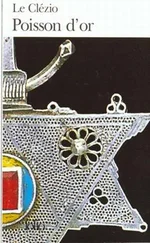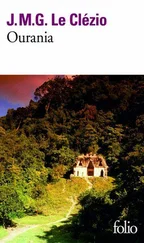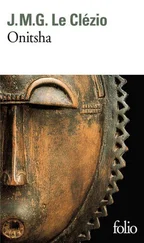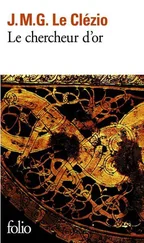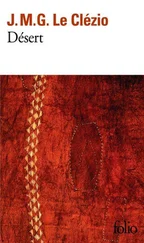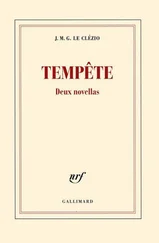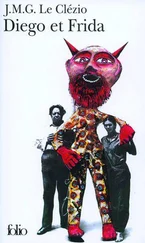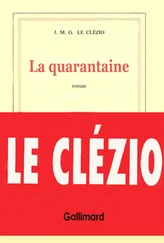FROM GOETHE, in his Theory of Colours: “Thanks to Kircher, the natural sciences present themselves to us in a much livelier and brighter manner than with any of his predecessors. They have left the study and the lecture theatre for a comfortably appointed monastery with ecclesiastics who are in communication with the whole world, have influence on the whole world, who want to teach people, but also to entertain and amuse them. Even if Kircher solves very few problems, at least he brings them up and examines them in his own way. He demonstrates an ease of understanding, facility and unruffled calm in his communications.”
FROM GOETHE, again: “Each one of us has something hidden inside himself, a feeling, a memory, which, if it were known, would make the man hated.” Doubtless the worst of men also has, even more profoundly hidden, something that would make him loved.
THE SUBCONSCIOUS is but one possible strategy of dishonesty.
1 (…) to princes alone, great men and friends.
In which the episode of the coffins with a tube is reported
 ATHANASIUS KIRCHER COULD not hear the story of Count Karnice without shuddering. The horror of his wife’s awakening in the darkness of the tomb, which he could clearly imagine, spurred on his genius to such an extent that only two days after that terrible event, he showed me his designs for a “tactile recaller,” a machine to prevent such dreadful mistakes ever happening again.
ATHANASIUS KIRCHER COULD not hear the story of Count Karnice without shuddering. The horror of his wife’s awakening in the darkness of the tomb, which he could clearly imagine, spurred on his genius to such an extent that only two days after that terrible event, he showed me his designs for a “tactile recaller,” a machine to prevent such dreadful mistakes ever happening again.
It consisted of a metal tube, six foot long & about six inches in diameter, to be inserted into the casket at the time of interment through a circular opening, which carpenters would have no problem incorporating in their coffins as a standard feature. The upper section of the tube, that which would be above ground, would terminate in a hermetically sealed box containing the works necessary for the functioning of the mechanism. My master explained its ingenious simplicity with a cross-section drawing. A rod attached to a very sensitive spring went down the tube into the coffin; screwed to the end was a brass sphere, arranged in such a way as to touch the chest of the presumed corpse: the least movement, even a breath taken before recovering consciousness, & the sphere would set the rescue in motion. The box would open at once, letting air & light flood into the coffin; at the same time a flag would be raised, a loud bell would sound, while a rocket would shoot up into the sky before exploding noisily, spreading the dazzling light of the resurrection over the graveyard.
If the box remained closed for two weeks, a sufficient lapse of time for all hope to disappear, all one had to do was to pull up the tube; a valve would automatically close the opening, so that one could finally fill in the grave. Once the “recaller,” or at least the part that had touched the corpse, had been disinfected, it was immediately ready for use in another interment.
I warmly commended Kircher’s latest invention. As it cost only a modest sum & was a model of simplicity, it would be easy to supply the cemeteries with them to avoid the risk of premature burials.
As I mentioned above, it was impossible to find a single coffin in Rome, but Cardinal Barberini, when he heard of this machine, put four of his own at our disposal. Working day & night, we made the tubes in less than a week. They worked perfectly & it was not long, alas, before they were put to use. Six of our Jesuit brothers were carried off by the plague in less time that it took to mourn them. Two of them, whose bodies were in such a state of decay there was no doubt they were dead, were sent to the communal grave, but the other four were interred in the College cemetery, each grave equipped with a “tactile recaller.”
Nothing happened during the first two nights & we went to bed on the third with our minds at rest concerning the fate of our unfortunate friends — they were resting in peace. Around three in the morning, however, a terrifying explosion woke us with a start. Realising immediately what it meant, Athanasius threw on his shirt as he hurried down the stairs, calling for help. I followed him, accompanied by several fathers.
We reached the cemetery almost as soon as he did, but he was already beside a grave with a raised flag, digging furiously with his mattock & shouting words of comfort to the one whose return to life had set off this commotion. Grasping other implements, we joined him to disinter the unfortunate man as quickly as possible.
I was busy with my spade, working as quickly as I could, when a long whistle followed by an explosion that set the night ablaze almost made us die of shock. Another flag had gone up a few yards from where we were. The ringing from the box sounded as if it came from the very depths of Hades. Those who so far had only been watching, hurried over to that grave & started digging up that coffin.
While they were thus occupied, a third detonation & then a fourth at almost the same time took our agitation to fever pitch. The whole College had woken. Some were praying in loud voices, others proclaiming a miracle: never did a cemetery resound with such faith & hope. Since there were more arms than implements, some started pulling up the soil with their hands; cries of encouragement mingled with thanksgivings, & the torches, a large number of which had been lit by the brother porter, gave the unusual scene the look of a phantasmagoria.
Having started first, we were the first to disinter the coffin; using a forked lever, Athanasius opened the lid as quickly as he could. In the light of the torches, we formed a circle round him: the sight that greeted us was more repulsive that our most revolting nightmares. The murmurs that came from our lips were more ones of disgust than of disappointment. Some turned away, calling on God, & a novice, suddenly fainting, almost fell into the grave. Floating on a sea of maggots, black with gangrene, Father Le Pen seemed ready to burst so swelled up he was with gas & sanies. It was his belly, taut as a wineskin, that had moved the sphere, setting off the alarm mechanism. The same causes producing the same effects, the cemetery was soon filled with lamentation & exclamations of horror.
Once we had gotten over the general stupor, we reinterred the four brothers, with many prayers at having disturbed their souls’ repose, then returned to our rooms, though few of us managed to get any sleep that night.
Put away in the mechanical section of the museum, these excellent machines were never used again. Even after the plague, once the corruption of the flesh had returned to its natural limits, no one thought of using them, out of either superstition or mistrust, so profoundly disturbing had been the effect of that first trial.
At the end of November the Draco Pestis , the insatiable hydra that had gorged on so many human lives, decided to abandon its prey. Overnight no one was dying of the plague in the streets of Rome anymore. Whether it had been set off by the Jews to avenge themselves on the Christians — as Cardinal Gastaldi maintained for no good reason since eight hundred of them had died in the ghetto — or by God himself as punishment for our sins, that still did not justify the scourge: God does not have to justify his acts, neither when He chastises us, nor when He delivers us.
As I have already said, fifteen thousand people died in Rome in four months; but that number, huge though it might be, was much lower than that which afflicted the cities of Palermo, Milan or, later, the big city of London. All in all, the Romans should be glad to have come out of such a trial relatively lightly.
In 1658 the Scrutinium Pestis appeared. In these two hundred pages my master examined the history of the epidemic, its possible causes, its different forms and symptoms, without omitting a single one of the remedies used to counter it. “But,” he concluded, “the best remedy for the plague is to flee very quickly & very far, & to stay away from the sources of infection for as long as possible; if, however, you cannot do that, then live in a very large, well-ventilated house situated on top of a hill, away from the drains & stagnant water; open the windows so as to purge the air & fill your dwelling with aromatic herbs; burn sulfur & myrrh & take abundant vinegar to purify the inside of your body as well …” Precious advice that subsequently saved the lives of numerous people.
Читать дальше

 ATHANASIUS KIRCHER COULD not hear the story of Count Karnice without shuddering. The horror of his wife’s awakening in the darkness of the tomb, which he could clearly imagine, spurred on his genius to such an extent that only two days after that terrible event, he showed me his designs for a “tactile recaller,” a machine to prevent such dreadful mistakes ever happening again.
ATHANASIUS KIRCHER COULD not hear the story of Count Karnice without shuddering. The horror of his wife’s awakening in the darkness of the tomb, which he could clearly imagine, spurred on his genius to such an extent that only two days after that terrible event, he showed me his designs for a “tactile recaller,” a machine to prevent such dreadful mistakes ever happening again.
